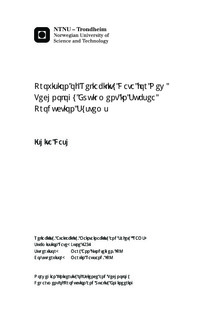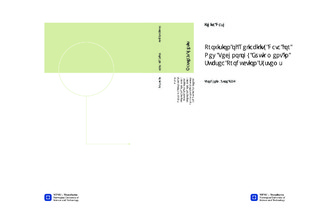| dc.contributor.advisor | Lundteigen, Mary Ann | nb_NO |
| dc.contributor.advisor | Rausand, Marvin | nb_NO |
| dc.contributor.author | Dash, Ishita | nb_NO |
| dc.date.accessioned | 2014-12-19T12:21:02Z | |
| dc.date.available | 2014-12-19T12:21:02Z | |
| dc.date.created | 2013-06-16 | nb_NO |
| dc.date.issued | 2012 | nb_NO |
| dc.identifier | 629238 | nb_NO |
| dc.identifier | ntnudaim:8330 | nb_NO |
| dc.identifier.uri | http://hdl.handle.net/11250/240887 | |
| dc.description.abstract | For certain new technologies such as subsea processing systems reliability, compactness and easy maintainability are the most important factors to be considered while designing. This is because installation and retrieval costs increase with the increase in the size of the equipment. Failure of such equipments will cause huge production losses leading to enormous financial losses. However to have a better understanding of how reliable a component is, it is most appropriate to express it quantitatively. Methods to predict the reliability of equipment have been suggested however they all require historical data to be fed as input to conduct the analysis. When dealing with new technologies these historical datas are nearly absent. The objective of this thesis is to propose a method for estimating the failure rate of such new technologies with special focus on subsea processing systems. A literature study was carried out on the various reliability datas such as OREDA, MIL-HDBK-217, FIDES and NSWC. The key features of each of the reliability data handbooks were identified. Also the various methods used for estimating the failure rates were discussed especially for FIDES and NSWC. A literature review of the various subsea processing systems was also carried out and a final focus was made on subsea multiphase helico-axial pump. A bayesian approach was chosen for the new proposed approach. The suggested approach consists of six steps where the analysis starts with a failure mode and effect analysis of the chosen new technology, helico-axial subsea pump in our case. Using the results from the failure mode and effect analysis and literature reviews an influence diagram is developed for the helico-axial pump. The probabilities of the priors and the conditional probabilities are assigned based reliability data handbooks and literature reviews. The importance of each of the failure modes is identified. Finally the failure of the pump is calculated by multiplying the failure rate of each of the failure modes with its calculated importance. The total failure rate of the pump is obtained by adding the modified failure rates. Using this method it was seen that the failure rate of the helico-axial pump with the given current design has a failure rate which is less than that of a centrifugal pump which is required to operate for a period of six years with one failure. Finally recommendations for further work have also been included at the final part of this report. | nb_NO |
| dc.language | eng | nb_NO |
| dc.publisher | Institutt for produksjons- og kvalitetsteknikk | nb_NO |
| dc.title | Provision of Reliability Data for New Technology Equipment in Subsea Production Systems | nb_NO |
| dc.type | Master thesis | nb_NO |
| dc.source.pagenumber | 90 | nb_NO |
| dc.contributor.department | Norges teknisk-naturvitenskapelige universitet, Fakultet for ingeniørvitenskap og teknologi, Institutt for produksjons- og kvalitetsteknikk | nb_NO |

